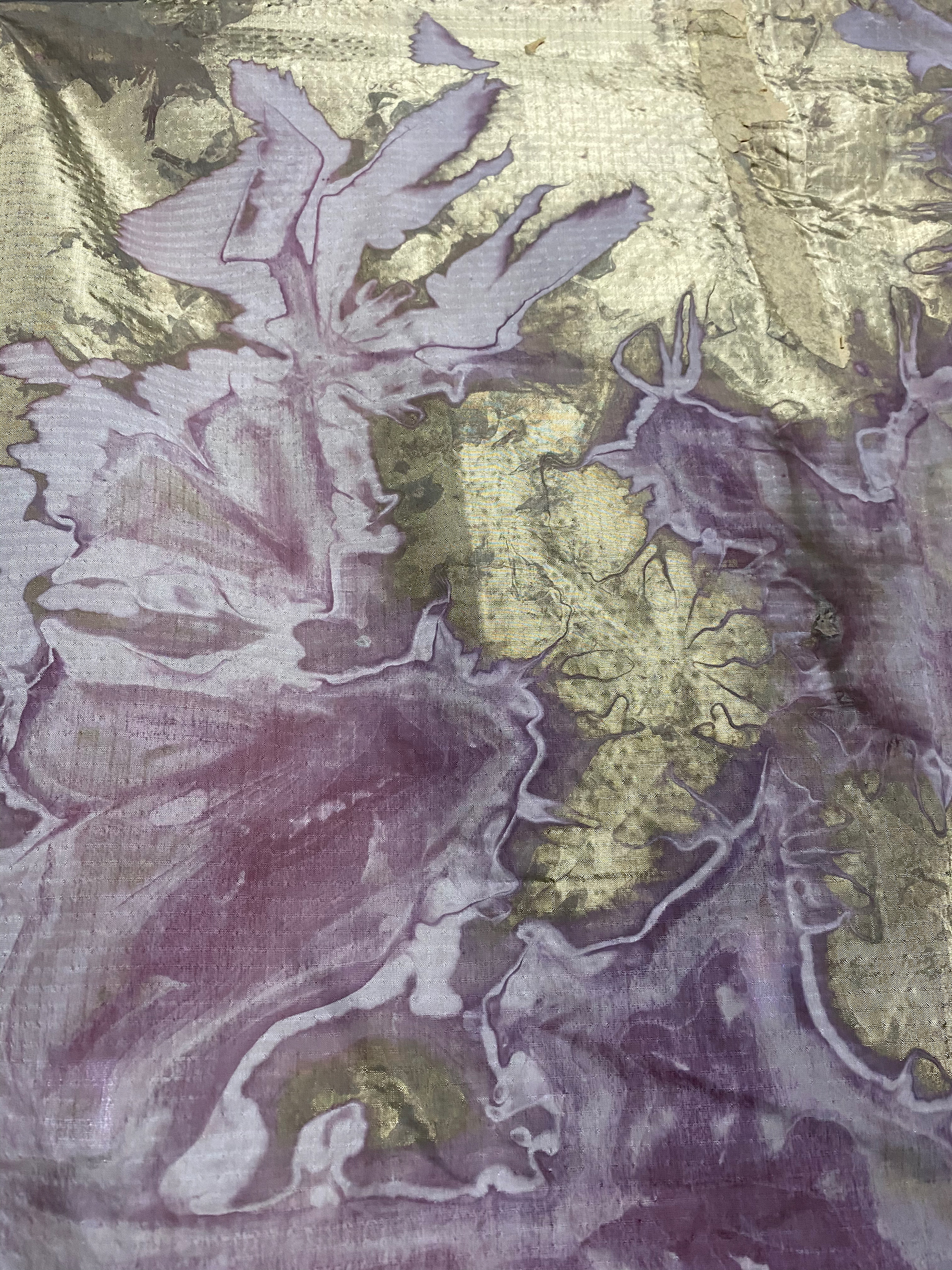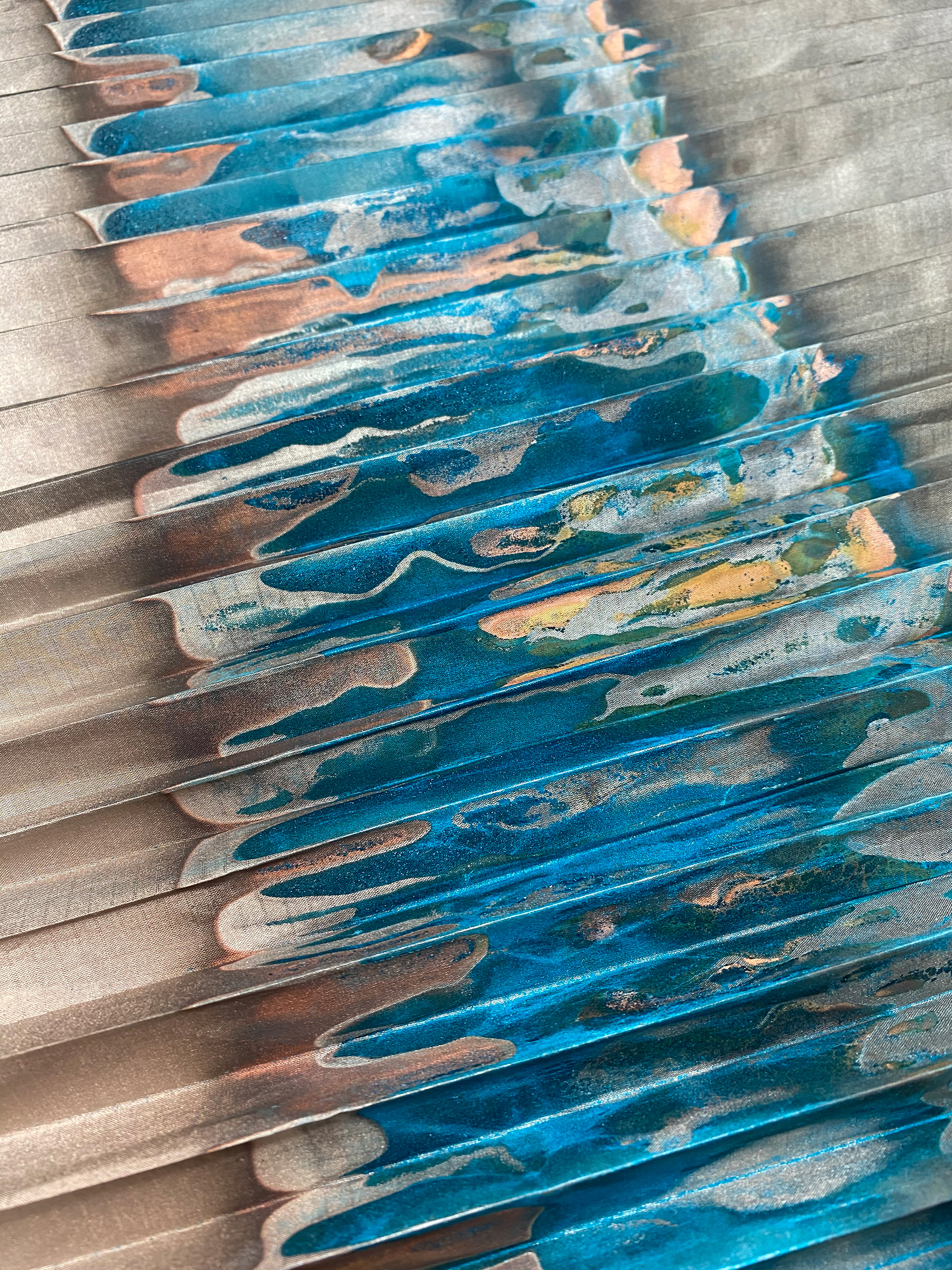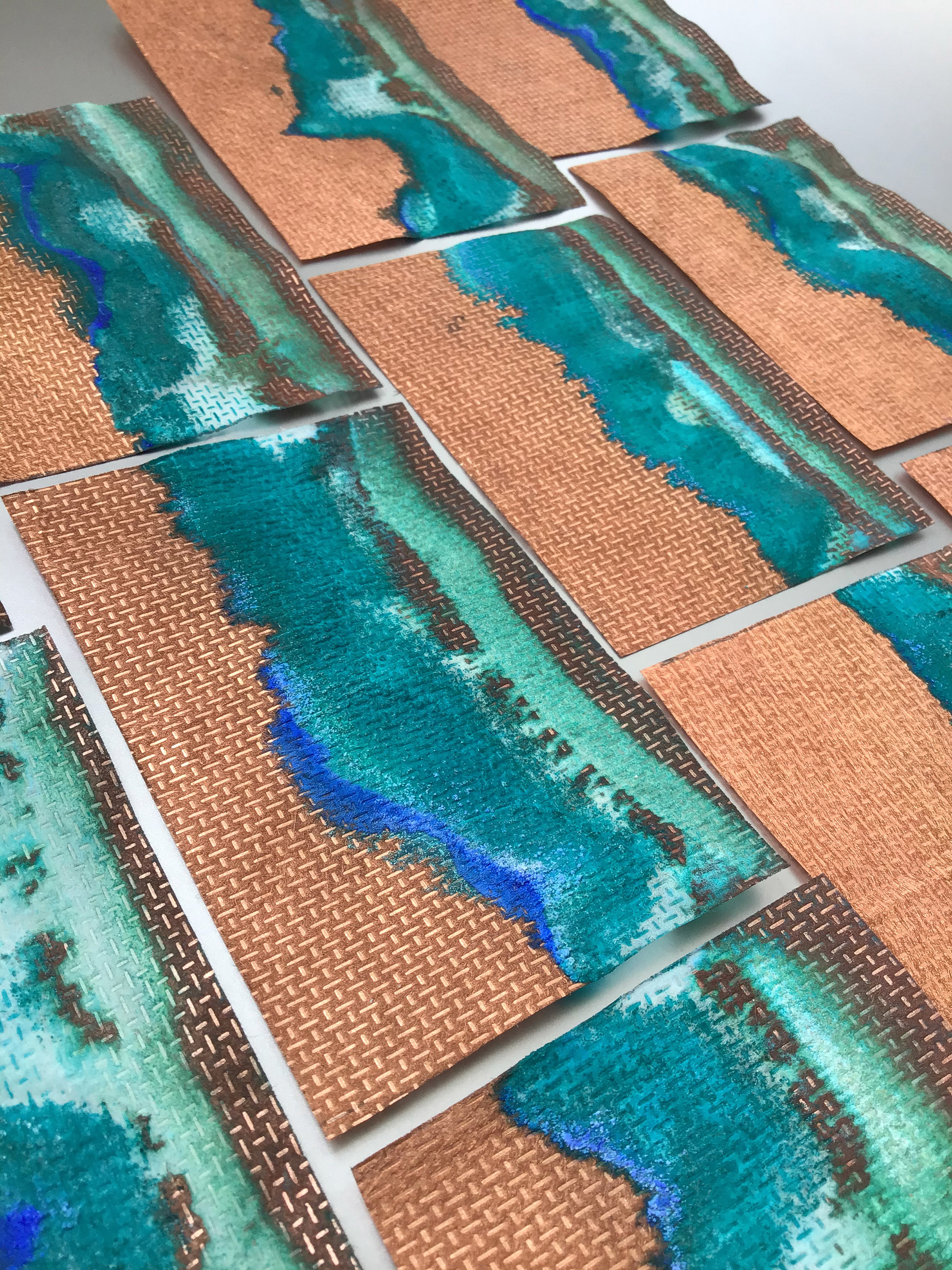Verdigris is the green pigment appearing on the surface of copper, brass and bronze statues caused by oxidation when exposed to time. During pandemic lockdown, as a practice on inner engineering, we explored evolution via erosion.
The name verdigris comes from the Middle English vertegrez, from the Old French verte grez, an alteration of vert-de-Grèce (“green of Greece”). The modern French spelling of this word is vert-de-gris (“green of grey”). It was used as a pigment in paintings and other art objects (as green color), mostly imported from Greece.
The ongoing material research on the fragile beauty of decay and the vibrancy of matter via chemical compounds has resulted into studies on woven and nonwoven patinated galvanized copper, and nickel textiles as interfaces controlling voltage running through a modular synthesizer. The shape, size and amount of sensors in the final textile interface is defined by the structure of entropy. Via capacitive sensing, interaction via touch and proximity is quantized and spatialized through a quadrophonic sound system
This material research is the outcome of practicing patient observation on chaos. In the current climate of ever continuous, stochastic changes, we as individuals are left as almost mere spectators on how a world wide situation develops. The slow, untamed patination process of verdigris engages us into the meditative state of embracing entropy with a smile, knowing that with time, hopefully the right ingredients and a bit of luck, something beautiful can form and surface.
Materials: ripstop CuNi, nonwoven Cu textile, acetic acid, sodium borate, sodium chloride, time, oxygen, and open windows.
Tools: measuring cups and spoons, plastic containers, holding clips, gloves.
Technique: cold patination on galvanized textile













